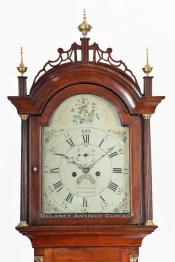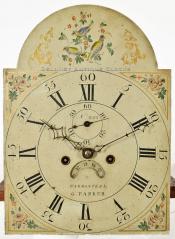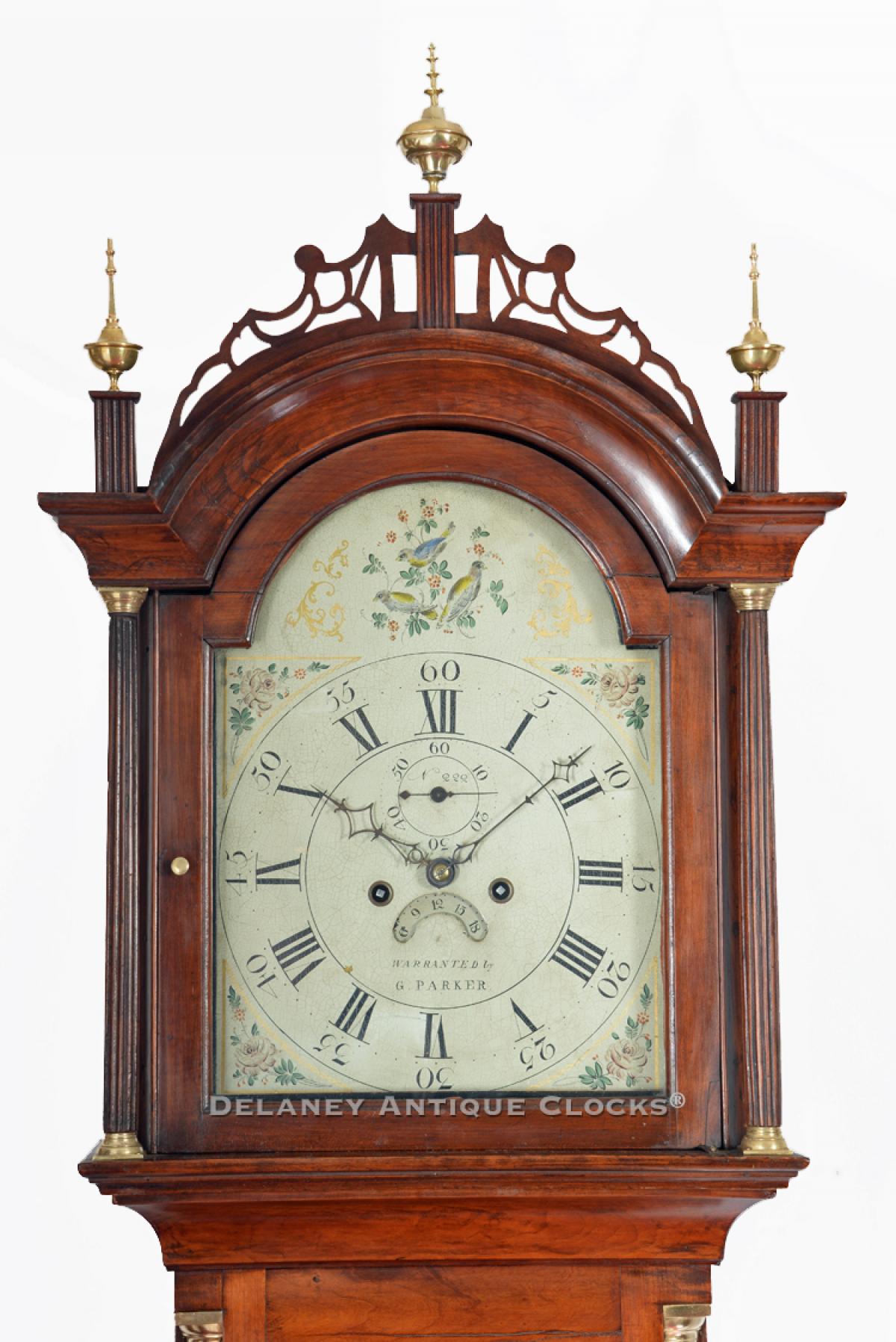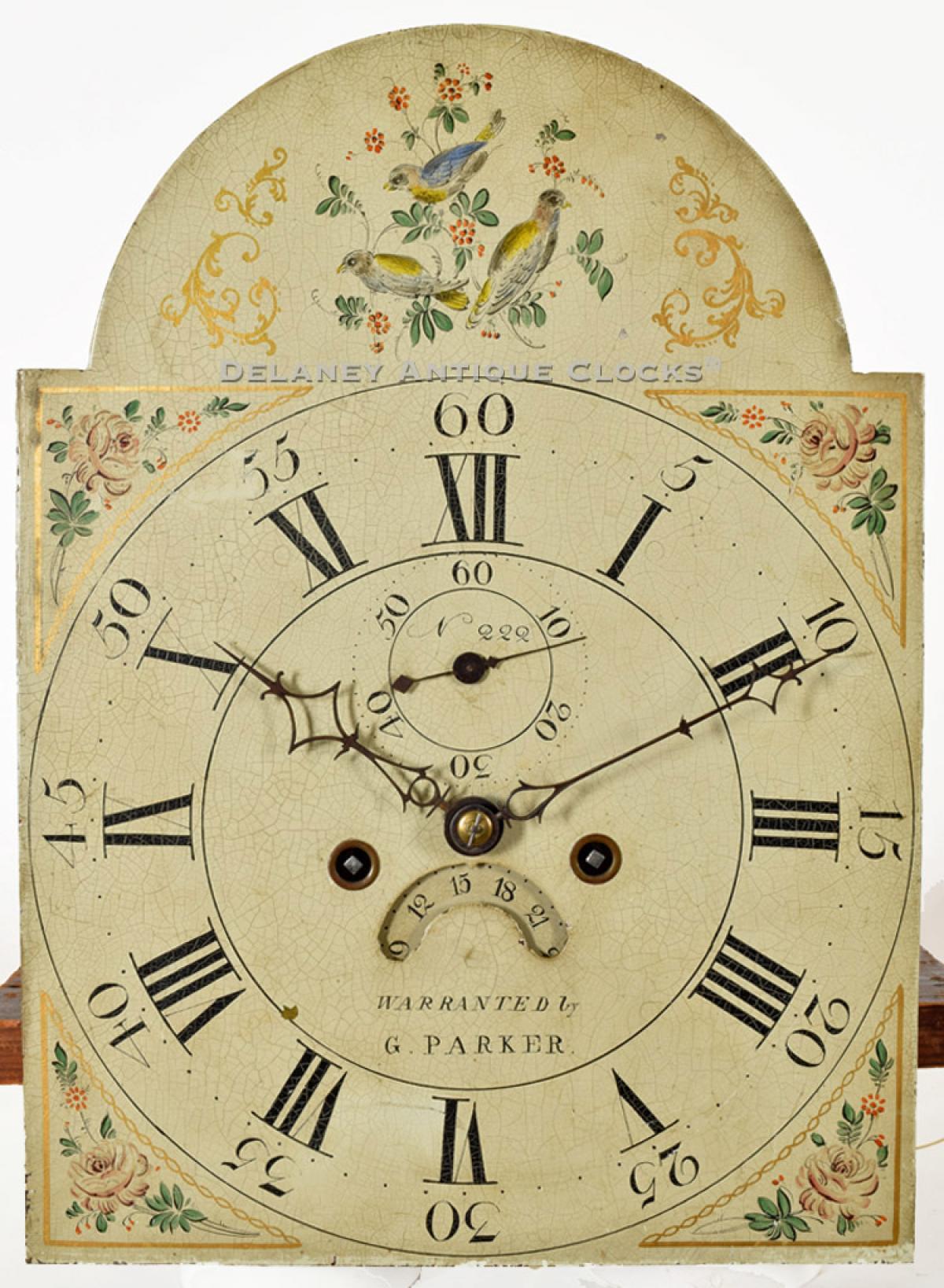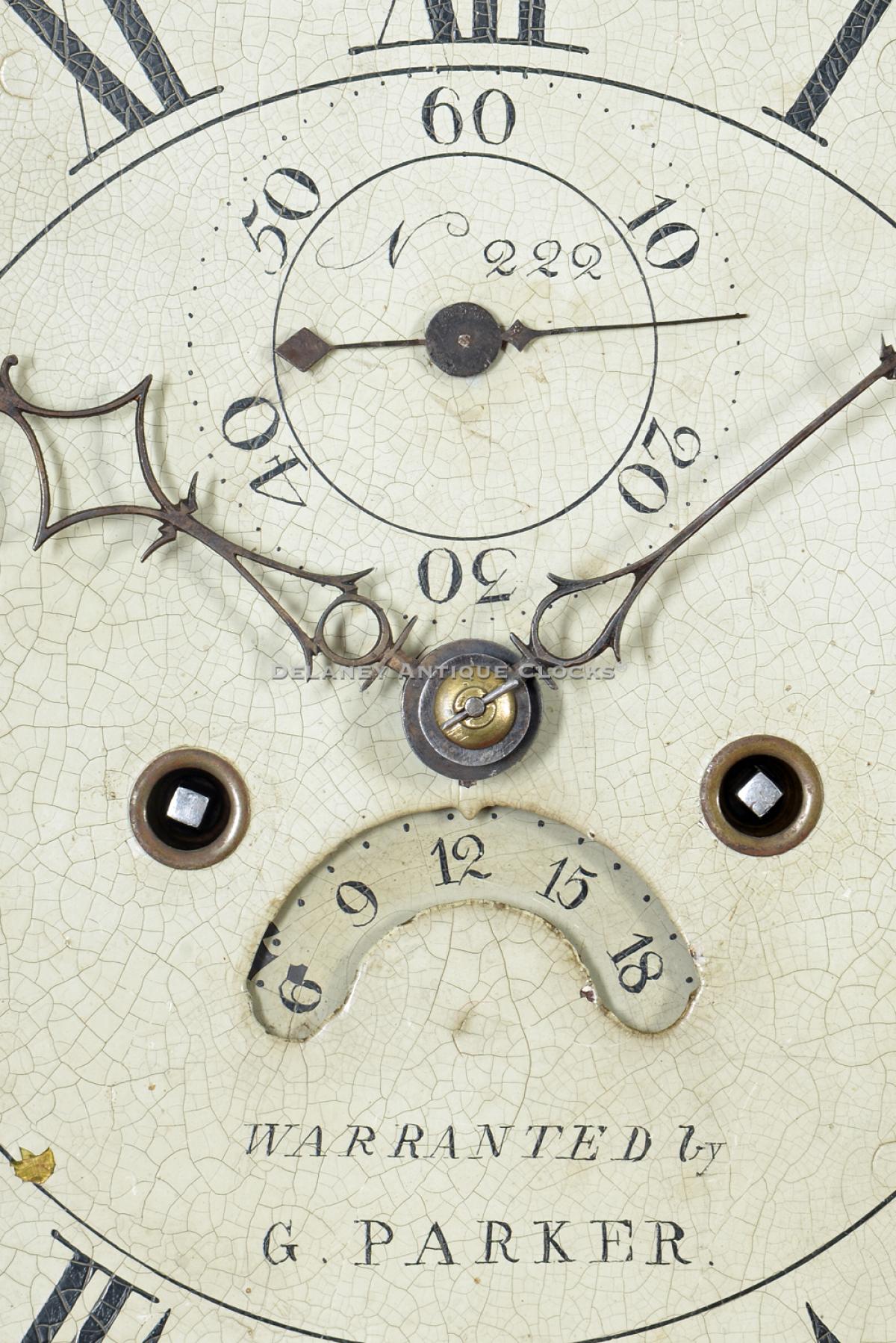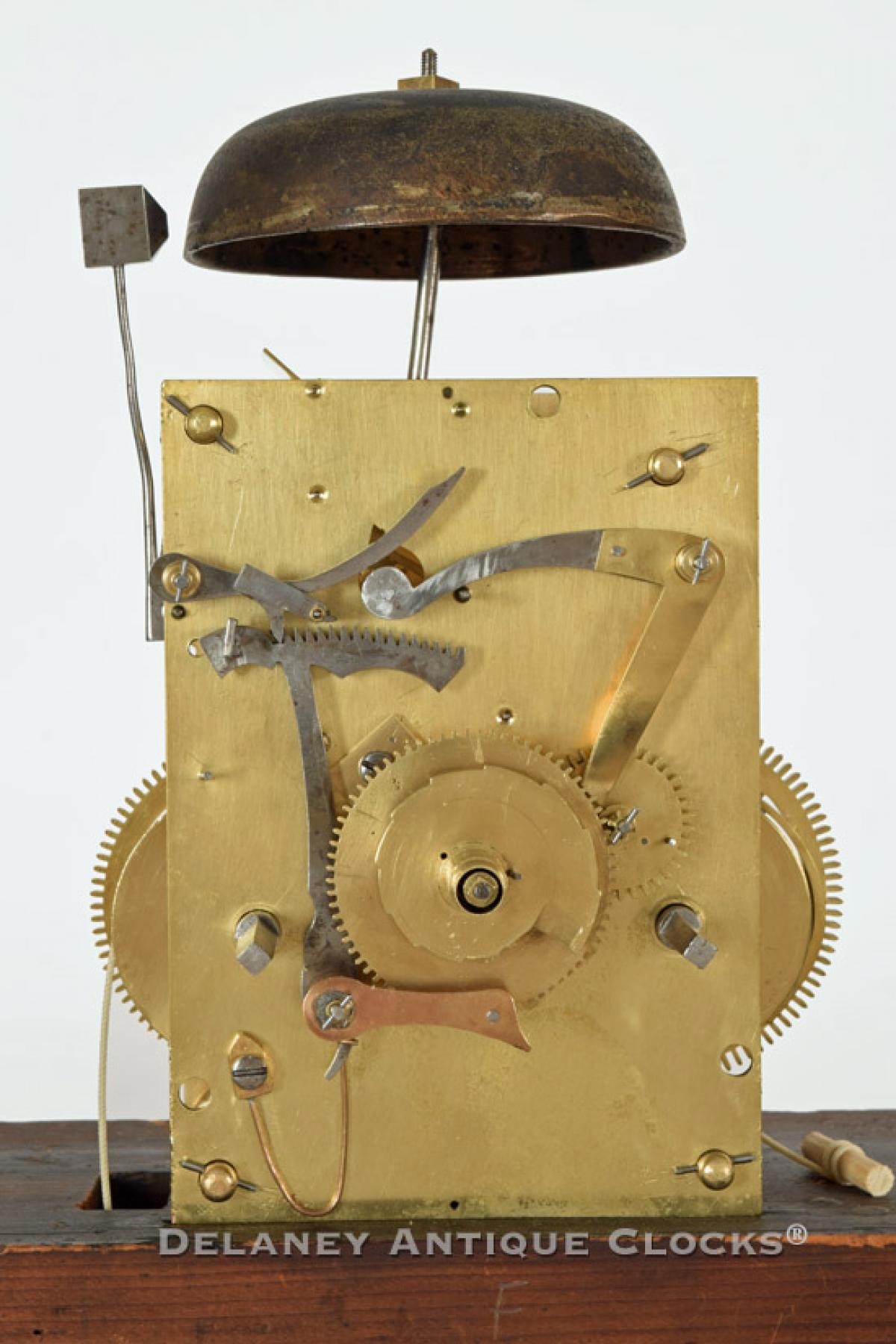Gardner Parker of Westborough, Massachusetts. No. 222. Inscribed, "Mr. Jonathan Bartlet / on April 8th, 1816." 217121
Gardner Parker was born in Hubbardston, Massachusetts, on March 14th, 1772. He died in Westborough by his own hand on February 16th, 1816. He was the son of Isaac and Marjory Parker. They were initially from Shrewsbury and moved to Hubbardston and then to Westborough in 1777. Gardner married Asenath Sherman of Grafton. They had one child, a son they named Perley Parker, who was born in Grafton. He grew up and married Betsey Mellen. Gardner is said to have been trained in the art of clockmaking by the Willards. In his book Willard's Patent Time Pieces, Paul Foley speculates that he was trained by Benjamin, the oldest of the Willard clockmaking brothers. He lists numerous entries where they had an ongoing business relationship manufacturing clock components. Most of these were charged to Benjamin. In October of 1800, Parker purchased some land in Westborough. Here set up a mill at the location that is now called "Parker's Folly." It was named this because the dam he constructed in order to hold water back failed. This may have been an attempt to apply water power to clockmaking. Later, Parker advertises that he has the ability to make all types of clocks, including tower clocks. One such tower clock was installed in Westborough in 1801. One was installed in Arlington in 1808 and one in Shrewsbury before 1816. There are also records of him building church organs. One such organ is recorded in the Westborough town history as being installed in the Baptist church in 1809. Parker's reputation was a man of nervous temperament. He would go days without sleep in order to finish a project. In February of 1816, his mind could longer handle the strain. He shot himself in a fit of despondency.
This example is a diminutive size measuring a mere 7 feet 3 inches (87 inches) tall to the top of the central finial. For its small size, this example is nicely proportioned. The case retains an older finish. The base stands on four applied bracket feet, which are applied to the bottom of this case. The waist is long. The sides of this case are fitted with quarter columns that terminate in brass quarter capitals. The waist door is rectangularly shaped and trimmed with a molded edge. The bonnet is a fretwork style and decorated with three brass finials that sit atop the fluted plinths. Fully turned bonnet and reeded columns terminate in brass capitals. These flank the arched bonnet door. This door is fitted with glass and opens to allow one access to the skillfully painted 12-inch iron dial.
The artwork on this dial is well executed. It is also signed on the front in script lettering "WARRANTED By / G. PARKER." Please note this dial is also numbered. This example is No. 222 and is so stated inside the seconds bit. The arch of this dial features a lovely bird in the arch. The time track incorporates Roman numerals that mark the hour. Arabic numerals are used to indicate the five-minute markers. This dial also displays the seconds and the calendar date.
The movement is constructed in brass and is of excellent quality. It is weight driven and designed to run for an eight-day duration. It will strike the hour on a cast iron bell. On the underside of the bell is the inscription, "Mr. Jonathan Bartlet / on April 8th, 1816." One would like to assume that Mr. Bartlet may have been an owner. It is more likely that he worked on or serviced the clock. The Bartlet name was not a common name in the town of Westborough during the first quarter of the 1800s. A quick internet search found that the Bartlet name was more commonly found in Northborough and that J. Bartlet and his family lived there when this clock was made. In fact, his house still stands. It is located at 7 Belmont Street.
This clock was made circa 1810 and stands 7 feet 3 inches tall to the top of the center finial.
Inventory number 217121.
Old Sturbridge Village has a Gardner Parker tall case clock in their collection. That clock features an inlaid cherry case and a painted dial that is automated with a rocking ship in the arch.
Gardner Parker was born in Hubbardston, Massachusetts on March 14th, 1772. He died in Westborough by his own hand on February 16th, 1816. He was the son of Isaac and Marjory Parker. They were originally from Shrewsbury and moved to Hubbardston and then to Westborough in 1777. Gardner married Assenath Sherman of Grafton. They had one child. A son name Perley Parker was born in Grafton and married Betsey Mellen. Gardner is said to have been trained in the art of clockmaking by the Willards. Paul Foley in his book, Willard’s Patent Time Pieces, speculates that he was trained by Benjamin the oldest of the Willard clockmaking brothers. He lists numerous entries where they had an on going business relationship manufacturing clock components. Most of these were charged to Benjamin. In October of 1800, Parker purchases some land in Westborough. He set up a mill at the location that is now called “Parker’s Folly.†It was named this because the dam he constructed in order to hold water back failed. This may have been an attempt to apply water power to clockmaking. Later he advertises the ability of make all types of clocks including tower clocks. One such tower clock was installed in Westborough in 1801, one was installed in Arlington in 1808 and one in Shrewsbury in before 1816. There are also records of his building church organs. Parkers reputation was a man of nervous temperament. He would go days without sleep in order to finish a project. In February of 1816, his mind could longer handle the strain. He shot himself in a fit of despondency.


